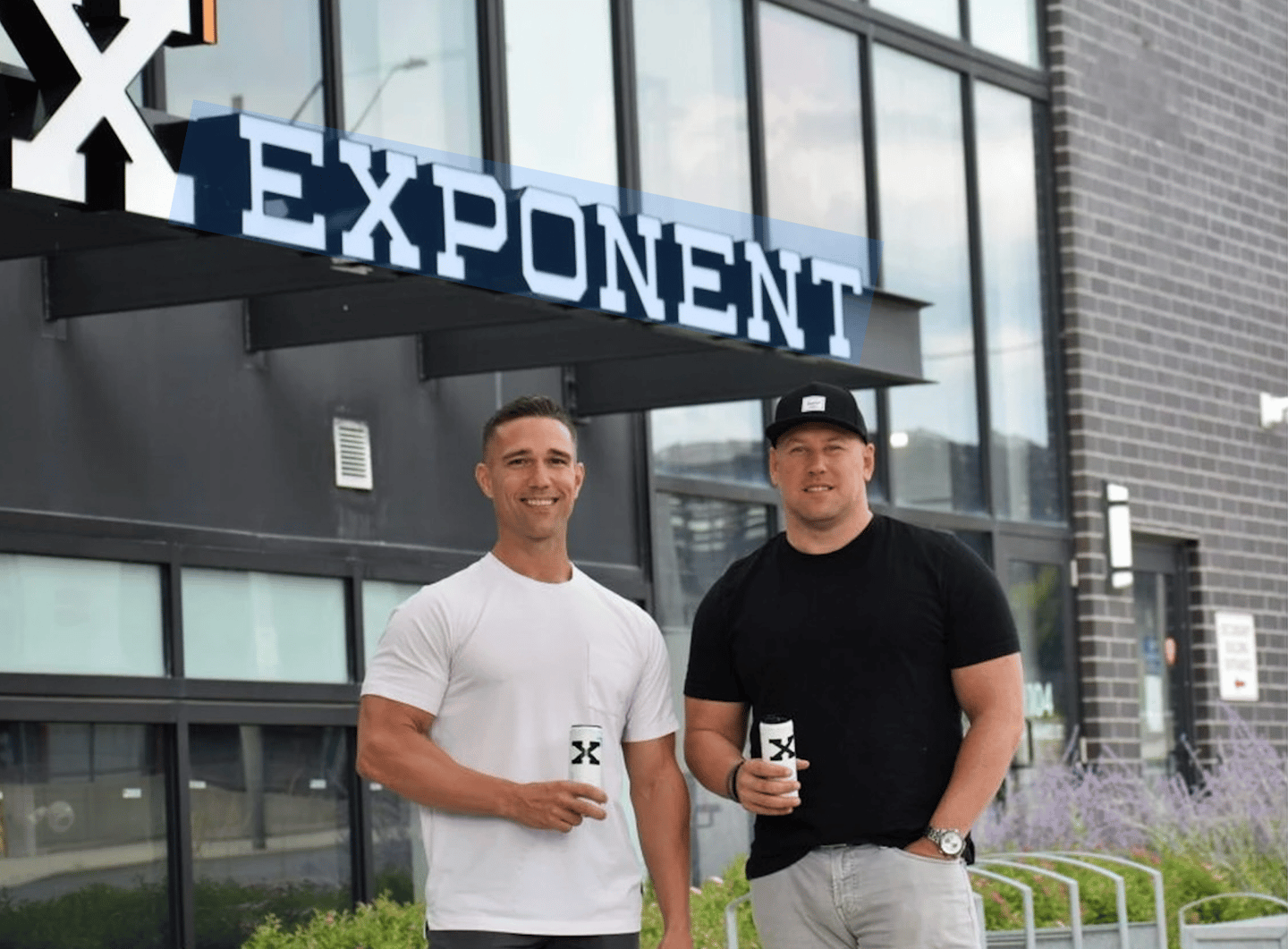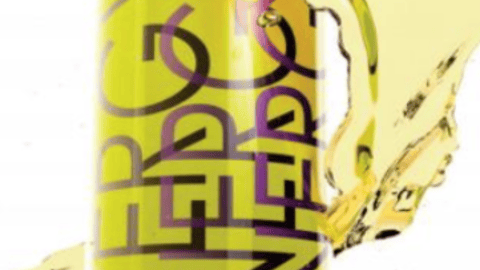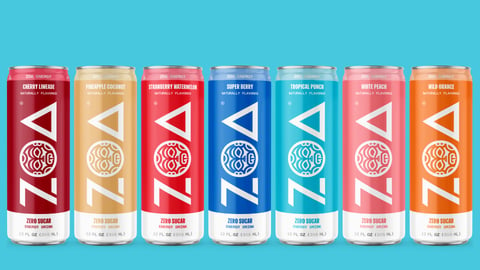The buzz on energy drinks
The pace of news around energy drinks is dizzying these days. If you blink, you might miss what’s happening in a red-hot category with big players and small trying to claim a slice of a growing market. The stats tell the tale.
Energy drink sales in Canada jumped from $851 million to $1.1 billion between 2018 and 2022, according to Euromonitor, a market research firm. Sales are poised to reach $1.5 billion by 2027. Stateside, Goldman Sachs is expecting the sales of energy drinks to rise by 14% this year, based on data gleaned from 30,000 retailers.
Future quest
You could say energy drink makers are feeling bullish about the future. Earlier this year, Red Bull announced it purchased a 15-acre site, destined to be an ingredient preparation facility, in Chilliwack, B.C. The brand that started in Austria in 1987 remains a top-selling energy drink, selling seven billion cans worldwide per year. Red Bull keeps it fresh with limited-time flavours, which include Summer Edition Juneberry and Winter Edition Fig Apple.
Meanwhile, Monster Beverage inked a deal to acquire Bang Energy last summer. The brand is gearing up for a fight with Red Bull, trying to flip the script and cater to more female customers, according to a recent article in Fortune magazine. Hybrid energy drinks made with coffee or tea hold promise for that demographic. Current numbers show 60% of energy drink consumers are male age 18 to 34.
Monster Energy Canada is also reaching new consumers with fresh flavour profiles, including Ultra Peachy Keen, which won in the Caffeinate/Energy Beverage category at CICC’s National Convenience Industry Awards in Montreal.
And, not to be left behind, Keurig Dr Pepper last year inked a US$863 million deal for a 30% stake in Nutrabolt, the maker of energy drinks such as C4 Energy and Xtend Energy. The company has now taken over distribution of C4 in Canada, marking its foray into the energy drink category. “We now have a beverage for every occasion—something for everyone,” Hasnain Abu-Bakar, national account manager - C&G, for Keurig Dr Pepper, told CSNC.
In other news, Hell Energy, a company based in Hungary, has created Hell A.I., the world’s first energy drink crafted by artificial intelligence, from its proprietary recipe to packaging.
Category staying power
For c-store operators, energy drinks can be effective drivers of in-store traffic. Sales in c-stores have rebounded along with other beverages, as people are out more, and returning to normal routines, like morning commutes to work. Analysts also say that category growth is happening despite inflationary pressures and consumers aren’t pushing back against price increases, seeing energy drinks as a luxury they’re willing to splurge on.
From unique flavours to celeb endorsements and good-for-you formulations, innovation is taking the category to new heights. Reign Energy added White Gummy Bear and Sour Apple to its lineup. In July, Kim Kardashian’s Kimade, a twist on pink lemonade, launched in partnership with Alani Nu, offered in colourful Barbie-pink cans.
Closer to home, Guru Organic Energy, which positions itself as a better-for-you option with natural ingredients, launched a new Fruit Punch flavour earlier this year and recently took home Vendor Partner of the Year at the CICC’s National Convenience Industry Awards. “Our mission is to clean up the energy drinks sector,” says director of shopper and trade marketing Francis Desjardins, adding Guru promises customers less sugar and “full flavour.”
The company has partnered with Gradey Dick, the sensational rookie from the Toronto Raptors and their first-round pick in the 2023 NBA Draft, as a spokesperson.
Three years after purchasing the Rockstar Energy Drink brand, PepsiCo Beverages Canada is tapping into its customers’ passion for music with a social content campaign “Grit Behind the Glory,” featuring two up-and-coming Canadian artists—Preston Pablo and Akintoye—sharing their hard work (grit) in pursuit of greatness (glory), fuelled in part by Rockstar. While the company has used celebrity endorsements in the past, this made-in-Canada campaign is a behind-the-scenes look at the journey itself.
Zoa, the energy drink brand that can count Dwayne “The Rock” Johnson among its co-founders, came to market in 2021. It has undergone a major expansion across Canada, adding Couche-Tard, Circle K and Parkland to its roster. “Over the past two decades, we have seen health and wellness grow as a macro trend,” says John Galloway, CEO, Zoa Energy. “That was then accelerated by the COVID-19 pandemic and people care about their physical wellbeing now more than ever.”
Zoa Energy is also positioning itself as a contender in the better-for-you energy category. “We see our customers are looking for hydration and energy boosting functionality. Our customers and fans are looking for healthy functional benefits with great taste and we deliver.”
Beyond caffeine, Zoa Energy provides the same electrolyte profile as leading hydration brands, as well as daily value of vitamins B and C. “It’s these qualities, along with great taste, that turn our customer into Zoa loyalists,” adds Galloway.
High-energy wellness is the focus of Guyaki’s Organic Yerba Mate drinks, which offer a unique non-carbonated blend of brewed yerba mate and organic fruit juice in a multitude of flavours. Originally from South America, the product, under the direction of general manager international, Eric Clark, is now a cold-vault staple at chain and independent c-stores across Canada.
Driving sales
For c-stores looking for a boost in energy drink sales, he advises to ensure your assortment of product is the best in the market. “Once you select a brand, give it a real chance to win,” he says. “Product presence is key. If you are going to bring a product into a store, bring it in with presence. Otherwise, it has no chance in this crowded environment. Give it the space on shelf to stand out. Perhaps an extra point of interruption in-store. Give it its moment and let the consumer decide.”
In-store media also gets a strong consumer response. “Letting brands tell their stories in creative ways can enhance consumers’ experiences in store, educate them, and can add up to additional sales.”
Galloway offers other savvy strategies. “First, implementing a robust loyalty program can work wonders by rewarding loyal customers and encouraging repeat business,” he notes. “Time-limited promotions are also a great way to drive trial and attract new customers. Additionally, utilizing secondary merchandising planograms can optimize product placement, while highlighting grab-and-go offerings can cater to the needs of busy shoppers. To further entice customers, leveraging shippers and endcaps for seasonal or promotional items can be highly effective.”
And don't underestimate the power of digital marketing channels, he says. “Exclusive offers through mobile apps or email newsletters can draw in tech-savvy customers. Collaborating with local businesses for cross-promotions can expand your customer base.”
Zoa will soon reap the added benefits of its deepening partnership with Molson Coors. In September, the company said it would boost their investment in Zoa Energy, setting the stage to double its planned media budget for the coming year.
New brand, fresh approach
The energy drink business isn’t just about big players. Smaller companies are elbowing their way into the crowded market. Newcomers Matt Stirling and Mike Pullam, two friends from London, Ont., came together in 2019 to co-found Exponent Energy, a company focused on creating energy drinks that are naturally sweetened, and have ingredients, like amino acids, green tea extract, ginseng and coconut water. They brought three SKUs (Blue Nova, Eclipse and Sector-C) to market in May 2023.
The learning curve has been steep. Neither Stirling nor Pullam have an extensive background in launching beverages, but as consumers of energy drinks, they knew what they wanted from them. They set out to find the perfect sweet spot in the category by developing a product with the appealing taste of traditional energy drinks without the sugar. “We started Exponent knowing we wanted to disrupt the market and get ahead of the changes we’ll see in the category over the next three to five years,” says Pullam.
They saw a gap between traditional energy drinks (high sugar, high caffeine) and functional beverages that appeal to health-conscious consumers who will take time to read nutrition labels. It was no easy feat creating an energy drink with all-natural flavours and sweetened naturally (courtesy of monk fruit, Stevia and erythritol). After six months of intensive product development with California-based food scientists, Exponent was born.
Without the deep pockets of bigger players, Pullam and Stirling are taking a different approach to get their product into retailers and into the hands of consumers. “For us, it’s a question of going brick by brick, store to store, consumer to consumer,” says Stirling. “It’s all about getting cans in hands. Every time we do that, it’s a win for us.”
Exponent is already in more than 1,000 stores and counting. They’ve achieved that by sampling events in-store, strong digital marketing pushing consumer traffic to retailers and laser-focused branding, including a modern, black and white can design that conveys product benefits quickly and clearly. There’s no mistaking it is meant to appeal to women just as much as men.
“Convenience store customers are especially open to something new that they haven’t seen before,” says Pullam. POS materials, like posters on coolers, and mini store takeovers with attractive promotions and discounts have been successful in building awareness and sales for the fledgling brand. “Being forward thinking and understanding the modern consumer is at the core of everything we do. I think we’ve created something special here. We’re out to change the narrative on energy drinks.”
Health Canada recalls and questioning caffeine limits
Beginning in July 2023, Health Canada began to recall energy drinks over their unauthorized caffeine content and labelling violations. The move made headlines. Consumers, retailers and energy drink makers took notice.
The recalls were triggered by the Canadian Food Inspection Agency, which says energy drinks must not contain more than the 180 mg of caffeine allowed in a single serving. Most of the recalled brands were not "manufactured nor intended for sale in Canada, and have been imported by third parties and sold in stores across Canada," according to Health Canada.
In search of products that deliver more bang for the buck, some retailers and customers feel caught in the middle. “Canadian consumers should feel confident that the caffeinated energy drinks (CEDs) distributed in Canada by CBA members fully comply with Health Canada’s regulations and are not impacted by this recall,” says Erich Schmidt, senior manager, communications and public affairs, Canadian Beverage Association (CBA). Its members include Red Bull, C4, Monster, Rockstar and Guru.
“We strongly encourage convenience stores and retailers to source energy drinks from Canadian Beverage Association members to ensure they are selling beverages that are compliant with Health Canada regulations,” he says.
In 2010, CBA members voluntarily committed to not advertise or promote energy drinks in settings (TV, radio, print or digital) and at events where the primary target audience is children. “The association and its members encourage all those who produce and market energy drinks to voluntarily implement the Energy Drinks Marketing Code, and to incorporate it into their business practices as appropriate.”
Some energy drink makers are frustrated, pointing out that, while their products are capped at 180 mg per serving (about the same as a cup of filter drip coffee) by Health Canada, consumers can go to their nearest big chain coffee shop and grab an extra-large coffee with 330 mg of caffeine. Ghost co-founder Daniel Lourenco has called out regulators, saying that energy drinks have been “unfairly vilified, frequently lumped together, and subject to blanket judgements.”
Ultimately, it will remain up to the consumer how much caffeine they want to consume while regulators and manufacturers continue weighing in.
This article appeared in the November/December 2023 issue of Convenience Store News Canada.








